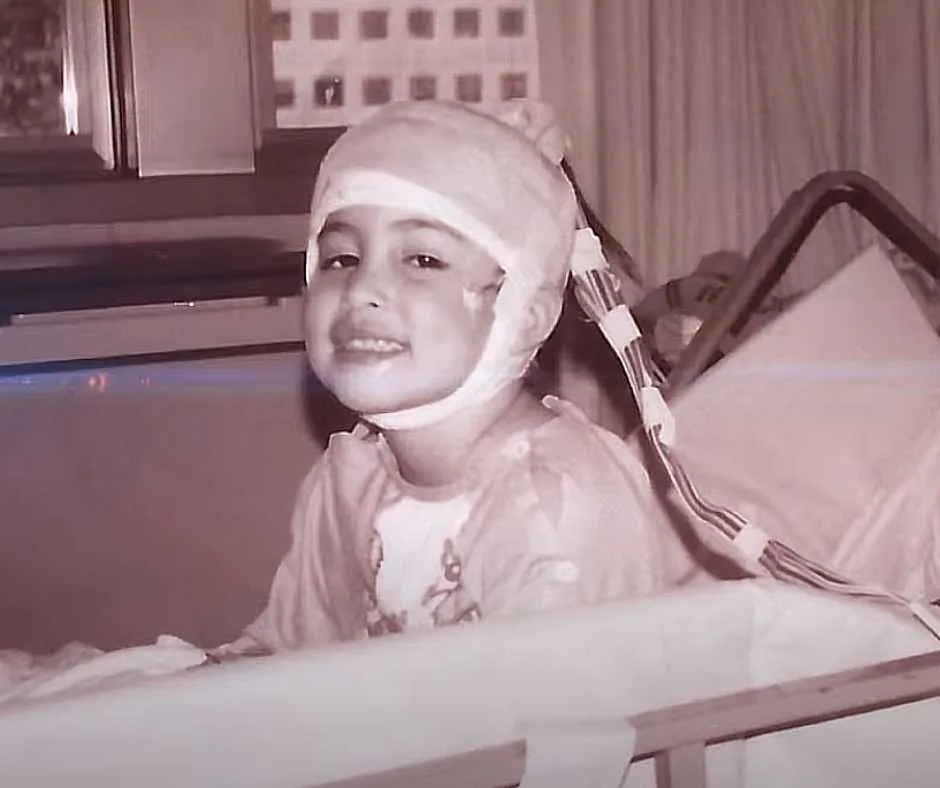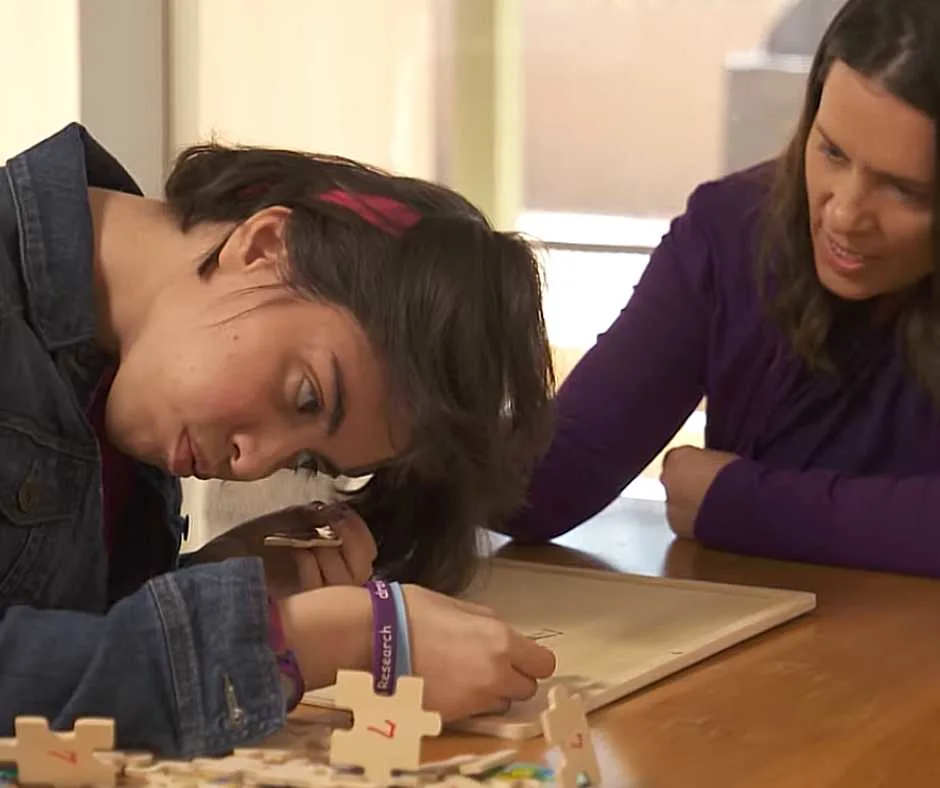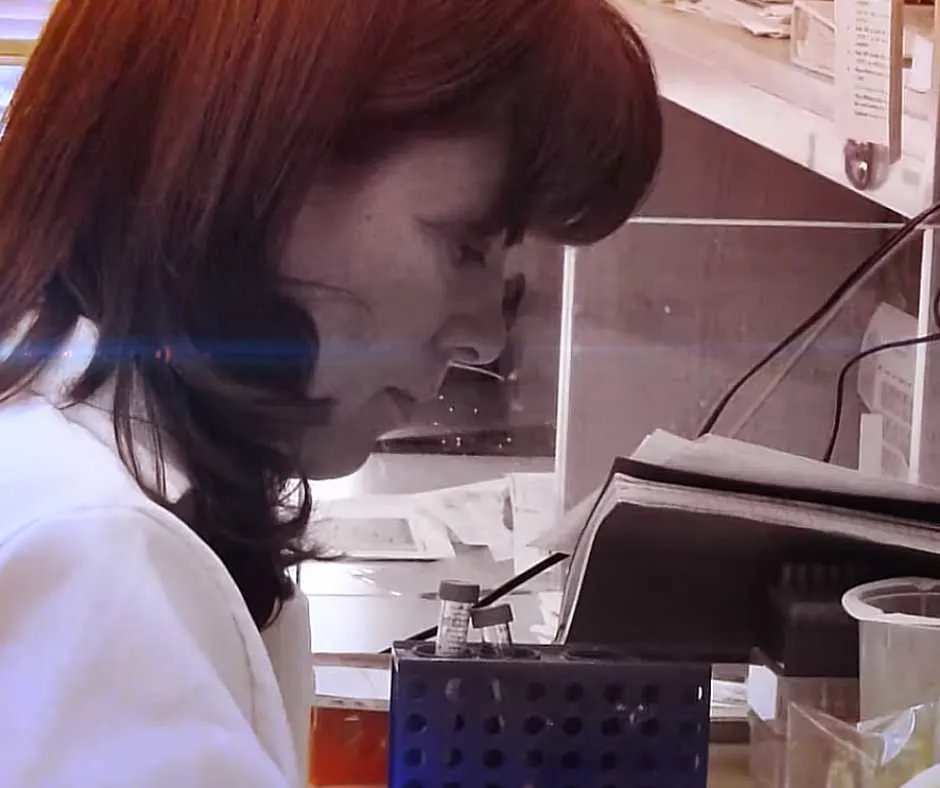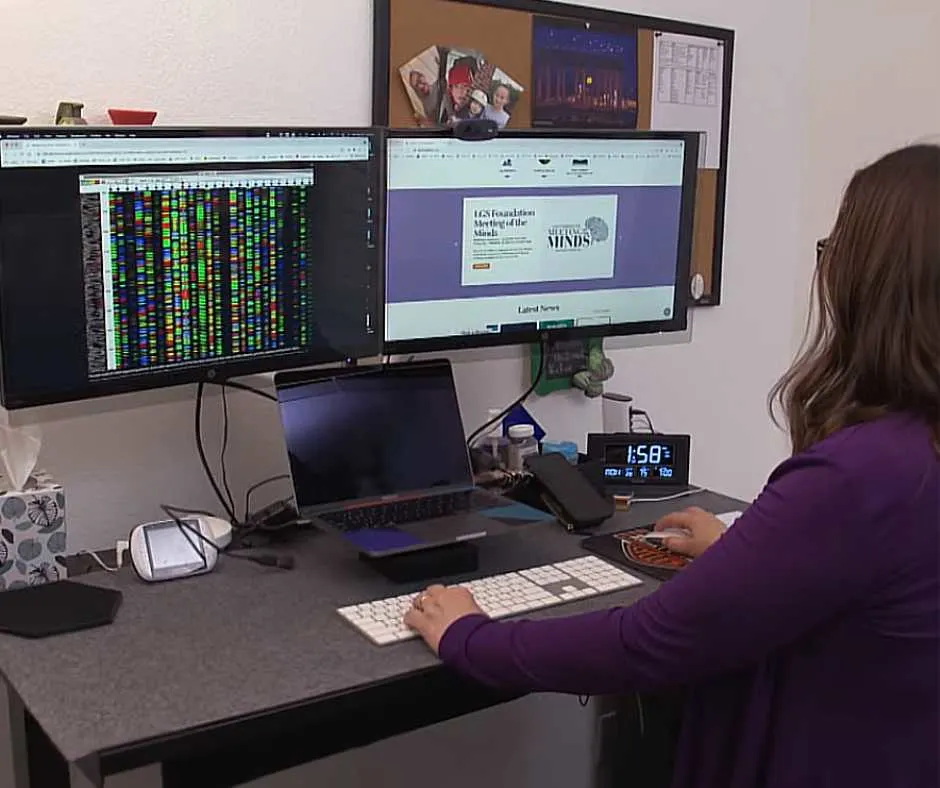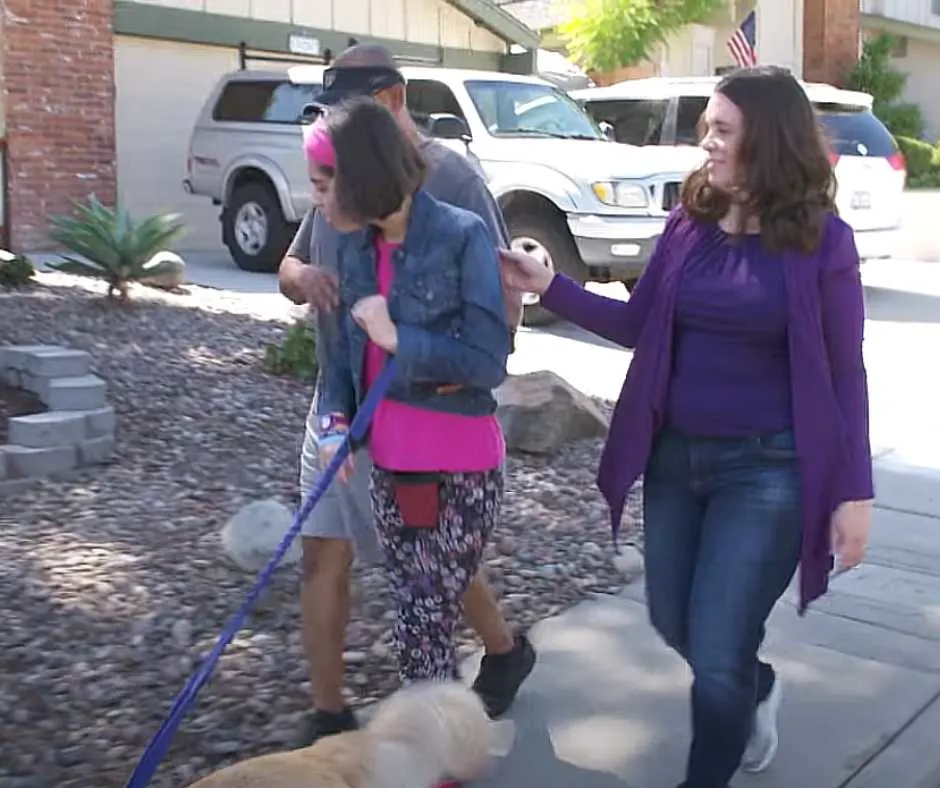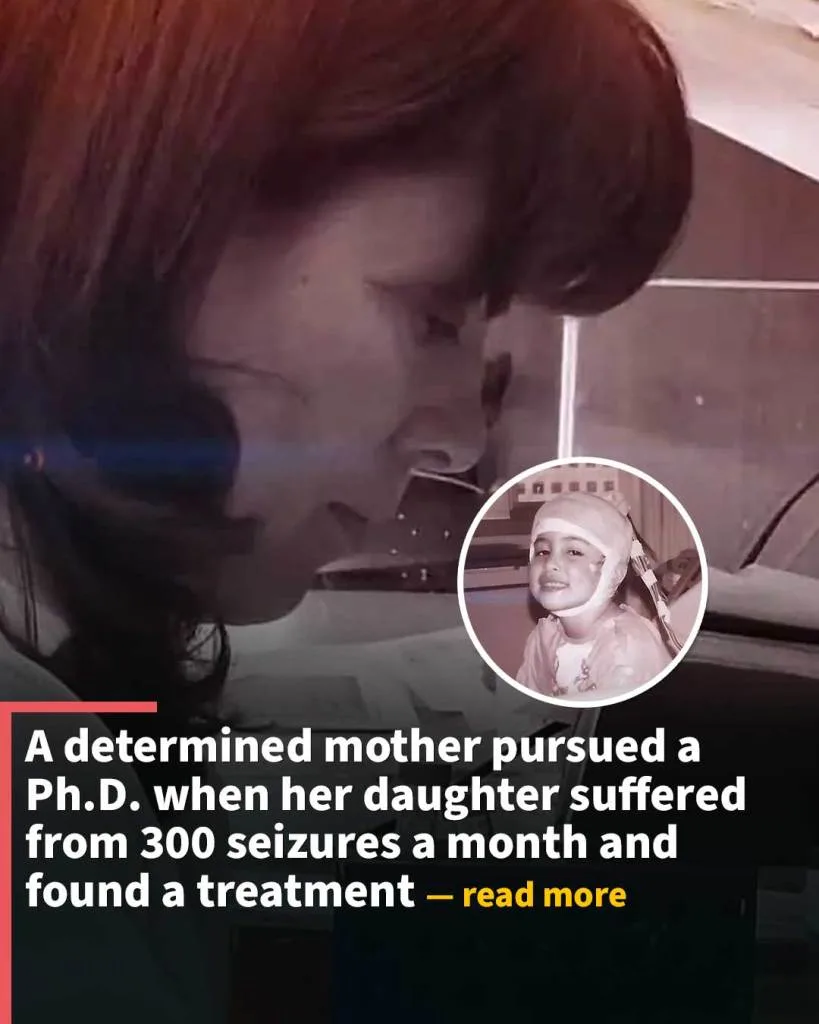Tracy Dixon-Salazar’s daughter, Savannah, developed Lennox-Gastaut syndrome (LGS) at 5 years old after experiencing uncontrollable seizures since she was two.
Tracy pursued a Ph.D. after realizing she needed to find information on her own to better understand her daughter’s condition.
At age 2, Tracy’s daughter, Savannah, had a frightening experience where she seemed to be choking. The family called 911 out of fear, and paramedics later clarified that Savannah had suffered a seizure.
“Both my husband and I went at the same time, ‘What’s a seizure,'” Tracy, 52, from San Diego. “We actually went six months, and she didn’t have any, and then at the age of 3, they came back hard and fast. She started having hundreds of seizures a day.”
At first, doctors avoided calling Savannah’s episodes seizures, using terms like “episodes” or “spells.”
Tracy eventually found out Savannah had epilepsy, but doctors were reluctant to diagnose her due to fear of stigma.
Frustrated by Savannah’s intense seizures, Tracy pursued a Ph.D. This led her to discover a mechanism behind Savannah’s seizures, who is now 30.
Tracy’s research also helped find a treatment that has lessened the frequency of Savannah’s seizures.
Tracy said she wanted to understand her child’s condition but didn’t anticipate being able to help.
She was surprised by her eventual ability to make a difference.
At age 3, Savannah began experiencing frequent and continuous seizures.
Despite seeking help from multiple doctors, Tracy and her husband encountered unclear diagnoses. They could not find the cause of the seizures despite extensive testing.
There was no family history or traumatic injury to explain them.
They only learned about Savannah’s epilepsy by reading her medical chart, as no one had informed them.
Determined to find answers, Tracy requested her daughter’s medical records as a mother on a mission.
At 5, Savannah was diagnosed with Lennox-Gastaut syndrome after experiencing seizures for almost two years. LGS involves frequent seizures and developmental delays.
Tracy explains that LGS is not inborn and develops over time when the brain is bombarded by seizures. This leads to abnormal wiring as the brain tries to organize itself, especially during early development.
The LGS Foundation outlines four key characteristics of Lennox-Gastaut syndrome:
- Early childhood seizures
- Treatment-resistant seizures and more than one type of seizure
- EEG test results that show abnormal brainwaves
- Intellectual disabilities or developmental delays
Savannah’s family felt lost regarding her health and were deeply overwhelmed at that time.
While the diagnoses gave Tracy a name for Savannah’s condition, the Lennox-Gastaut syndrome, the information they received didn’t quite match their experiences with Savannah’s life.
“The messaging (in the 1990s) was ‘You can live a full life with epilepsy,'” Tracy recalls.
However, this didn’t match their experience at home.
Savannah’s development stopped, requiring frequent hospitalizations and even resuscitation, she added.
Realizing the lack of answers, Tracy saw the importance of becoming an expert in her daughter’s health.
She described the disease as intrusive, unexpected, and consuming, emphasizing the motivation that comes from directly experiencing its impact, especially when it affects someone as precious as your own child.
Over time, Savannah’s seizures decreased, yet she still faced hundreds monthly, accumulating an estimated 40,000 seizures.
Her development stalled by age 3, preventing her from acquiring basic skills like bathroom use or reading, and she remained at a toddler’s mental level despite getting older.
At times, Savannah experienced seizures that persisted, necessitating emergency action, either through hospital visits or administering rescue medications.
Initially, these medications were given rectally, but now options include nasal sprays and dissolvable pills, as per the Epilepsy Foundation.
With that being said, Tracy decided to return to school after previously serving in the military.
Initially enrolling in college for English classes to better understand scientific literature, she later shifted to science courses and found a passion for the subject.
“I was just trying to understand how this kid, this healthy 2-year-old, could go from being totally normal to having seizures and her life derailed. And reading those (medical studies) drove me to college,” she says. “I needed an outlet for the pain.”
Over 12 years, Tracy pursued her education diligently, obtaining associate, bachelor’s, and master’s degrees before earning a Ph.D. in neurobiology, followed by a three-year post-doctoral program.
Studying provided her with a sense of purpose during a challenging period.
Feeling powerless to help her daughter, Tracy turned to education as a way to contribute.
Despite doctors’ inability to pinpoint the cause of Savannah’s epilepsy, Tracy found their dismissal of understanding its origins troubling.
This led her to delve into genetics, eventually joining a lab focused on epilepsy genetics.
Through genetic analyses, she sought to uncover insights into her daughter’s condition, the Lennox-Gastaut syndrome, even analyzing Savannah’s genome herself.
“Savannah didn’t have inherited epilepsy,” Tracy explains. I sequenced her, did all this analysis, and was able to show she’s got calcium channel mutations.”
These mutations caused excessive calcium flow through certain pathways, sparking Savannah’s seizures.
Tracy found this fascinating, especially since the family had witnessed calcium’s effects on Savannah without understanding the link.
Despite doctors recommending calcium supplements to counteract medication-induced calcium depletion, Savannah’s epilepsy worsened with each attempt.
“We tried (calcium) three different times, and she always had more seizures,” she says. “I’m like, ‘There’s something to this.'”
After Tracy shared her findings with Savannah’s doctors, despite their lack of familiarity with the genetic aspect, they agreed to prescribe a calcium blocker typically used for high blood pressure and arrhythmias.
“There’s actually a drug that blocks these exact calcium channels,” she explains.
Tracy noticed a significant change in her daughter’s condition shortly after starting the new medication.
Within two weeks of beginning the new medication, Tracy recalls Savannah’s seizures reducing drastically from 300 a month to only a few occurrences per week, resulting in a remarkable 95% reduction.
This improvement has persisted for 11 years, which Tracy finds remarkable.
Savannah is doing much better since starting the medicine. Initially, her behavior was like that of a 3-year-old due to brain damage.
But now, Tracy happily notes, there’s been significant improvement in her personality, speech, mobility, and potty training.
Tracy, who leads the LGS Foundation, openly discusses the struggles of caring for those with Lennox-Gastaut syndrome.
A survey by UCB revealed that only 22% of caregivers in the rare epilepsy community feel adequately supported for long-term planning.
Tracy found solace in her family’s support and wished the same for others.
Recently, she and Savannah had a touching moment while choosing a dress together.
Savannah, now interested in boys and social media singers, enjoys puzzles but cannot work due to her inability to read or write.
However, Tracy worries about Savannah’s trusting nature, which makes her vulnerable.
Despite efforts, they’ve faced rejection in finding a place for Savannah due to her seizures and intellectual disability.
While disheartening, Tracy’s determination to advocate for her daughter remains strong.
“Everything’s hard. I can’t even go to the neurology office with this kid. I spend a lot of time fighting with insurance companies,” she says.
Yet, Tracy is determined to improve the world through advocacy.
She believes it’s crucial for her daughter and others with similar challenges to have a place in society, and she’s committed to spreading that message.
Watch Tracy’s journey to understand Savannah’s rare disease, Lennox-Gastaut syndrome:
Discover more from My Positive Outlooks
Subscribe to get the latest posts to your email.




